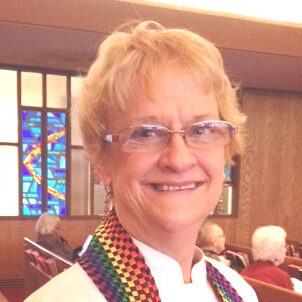Stewardship Ministry
SERVING THE NEEDS OF LEADERS IN FOUNDATIONAL CHRISTIAN MINISTRIES: STEWARDSHIP MINISTRY
What would it look like to lead a congregation of joyful, generous gospel stewards? Stewardship is what we do with what God has entrusted to us. Vibrant Christian stewardship includes what we do on God’s behalf in our relationships; use of time, skills, abilities, and passions; management and sharing of possessions; and current and planned giving for God’s work through the church.
Such faithful stewardship grows not from obligation or membership, but from a grateful response to God’s initial outpouring love and covenant faithfulness to us. When we start with gratitude, we end up living out of God’s abundance instead of sinking into scarcity thinking. We nurture generous living in ourselves and others, encouraging one another to trust God’s empowering work among us.
Some church participants focus on the natural world as a loving gift from God. They form church Green Teams, Terra or other care-for-the-earth groups to raise people’s awareness of our carbon footprint, lift up God’s vision for creation’s renewal, and advocate for justice and peace, seeking to become better stewards of God’s creation.
Giving generously causes us to reprioritize our lives, seeking to offer to God the first and the best of all that God has given us, and managing all the rest according to God’s generosity. This is first fruits living, and our goal and cornerstone of discipleship. We can give the first and the best of our time each day in devotions and each week in worship, the first of our relationships through Christian conferencing, and the first of our income through tithing and additional percentage giving. Tithing – giving to God’s work ten percent of what we have received – is a starting point for our growth in giving.
At the same time, first fruits living goes beyond tithing. Instead of asking, “What percentage can I give to God?” it prompts us to ask, “How little can I live on in order to give more to God’s work?” In this way, John Wesley is a model and a precursor in the call to simpler living. Those who use Bishop Robert Schnase’s resources on “extravagant generosity” find helpful guidelines for congregations and for the personal joy of giving.
Whether we use the word “stewardship” or “generosity,” it is crucial to speak the language of each generation, particularly engaging children and youth. This includes highlighting not only abundance as well as sacrifice, but also personal meaning, life/work balance, and the importance of community. Various social media are essential communication channels, as well as hands-on ministry.
All of these aspects of nurturing generous living lead to year-round stewardship in the life of the congregation, where pastors and lay leaders work collaboratively to raise awareness and offer opportunities for engagement. It is especially important to invite worshipers to participate in small group life, testing their beliefs with personal experience and group accountability. Teaching stewardship begins with young children and leads into youthful years. People of all ages are drawn into stewardship through participation in hands-on mission, and all ages benefit from a sense of personal connection in our wider, shared ministry of Apportionment giving.
In future issues, look for topics on generosity, first fruits living, care for the earth, and year-round stewardship.
From PATHWAYS TO CONGREGATIONAL VITALITY by the General Board of Discipleship of The United Methodist Church


